Broadband Electromagnetic Dipole Resonance by the Coupling Effect of Multiple Dielectric Nanocylinders
Abstract
:1. Introduction
2. Theoretical Modal of Coupled Nanoparticles
3. Resonant Scattering of Nanocylinders
3.1. Scattering Characteristics of Single Nanocylinder
3.2. Scattering Characteristics of Double-Nanocylinders-Combination
3.3. Scattering Characteristics of Three-Nanocylinders-Combination
4. Influence of Substrate on Scattering Resonances
5. Resonant Characteristics of Nanocylinder-Periodic-Array
6. Summary
Acknowledgments
Author Contributions
Conflicts of Interest
References
- Sun, D.; Wang, M.; Huang, Y.; Zhou, Y.; Qi, M.; Jiang, M.; Ren, Z. Enhanced spatial terahertz modulation based on graphene metamaterial. Chin. Opt. Lett. 2017, 15, 051603. [Google Scholar]
- Sun, Q.; Wang, S.; Liu, H.; Zhu, S. Highly efficient mid-infrared metasurface based on metallic rods and plate. Chin. Opt. Lett. 2016, 14, 051101. [Google Scholar]
- Luigi, B.; Khan, K.; Liu, Q.; Lin, M.; Wang, Q.; Ouyang, Z. Tunable narrowband antireflection optical filter with a metasurface. Photonics Res. 2017, 5, 500–506. [Google Scholar]
- Cao, T.; Li, Y.; Zhang, X.; Zou, Y. Theoretical study of tunable chirality from graphene integrated achiral metasurfaces. Photonics Res. 2017, 5, 441–449. [Google Scholar] [CrossRef]
- Kwon, M.K.; Kim, J.Y.; Kim, B.H.; Park, I.K.; Cho, C.Y.; Byeon, C.C.; Park, S.J. Surface-plasmon-enhanced light-emitting diodes. Adv. Mater. 2008, 20, 1253–1257. [Google Scholar] [CrossRef]
- Atwater, H.A.; Polman, A. Plasmonics for improved photovoltaic devices. Nat. Mater. 2010, 9, 205–213. [Google Scholar] [CrossRef] [PubMed]
- Ferry, V.E.; Verschuuren, M.A.; Li, H.B.T.; Verhagen, E.; Walters, R.H.; Schropp, R.E.I.; Atwater, H.A.; Polman, A. Light trapping in ultrathin plasmonic solar cells. Opt. Express 2010, 18, A237–A245. [Google Scholar] [CrossRef] [PubMed]
- Evlyukhin, A.B.; Reinhardt, C.; Seidel, A.; Luk’yanchuck, B.S.; Chichkov, B.N. Optical response features of Si-nanoparticle arrays. Phys. Rev. B 2010, 82, 045404. [Google Scholar] [CrossRef]
- Kuznetsov, A.I.; Miroschnichenko, A.E.; Fu, Y.H.; Zhang, J.B.; Luk’yanchuk, B. Magnetic light. Sci. Rep. 2012, 2, 492. [Google Scholar] [CrossRef] [PubMed]
- Fan, P.; Huang, K.C.Y.; Cao, L.; Brongersma, M.L. Redesigning photodetector electrodes as an optical antenna. Nano Lett. 2013, 13, 392–396. [Google Scholar] [CrossRef] [PubMed]
- Schuller, J.A.; Barnard, E.S.; Cai, W.; Jun, Y.C.; White, J.S.; Brongersma, M.L. Plasmonics for extreme light concentration and manipulation. Nat. Mater. 2010, 9, 193–204. [Google Scholar] [CrossRef] [PubMed]
- Tian, X.; Li, Z. Visible-near infrared ultra-broadband polarization-independent metamaterial perfect absorber involving phase-change materials. Photonics Res. 2016, 4, 146–152. [Google Scholar] [CrossRef]
- Fu, Y.H.; Kuznetsov, A.I.; Miroschnichenko, A.E.; Yu, Y.F.; Luk’yanchuk, B. Directional visible light scattering by silicon nanoparticles. Nat. Commun. 2013, 4, 1527. [Google Scholar] [CrossRef] [PubMed]
- Bu, T.; Chen, K.; Liu, H.; Liu, J.; Zhi, H.; Zhuang, S. Location-dependent metamaterials in terahertz range for reconfiguration purposes. Photonics Res. 2016, 4, 122–125. [Google Scholar] [CrossRef]
- Zhao, Q.; Zhou, J.; Zhang, F.; Lippens, D. Mie resonance-based dielectric metamaterials. Mater. Today 2009, 12, 60–69. [Google Scholar] [CrossRef]
- Ginn, J.C.; Brener, I.; Peters, D.W.; Wendt, J.R.; Stevens, J.O.; Hines, P.F.; Basilio, L.I.; Warne, L.K.; Ihlefeld, J.F.; Clem, P.G.; et al. Realizing optical magnetism from dielectric metamaterials. Phys. Rev. Lett. 2012, 108, 097402. [Google Scholar] [CrossRef] [PubMed]
- Bakker, R.M.; Permyakov, D.; Yu, Y.F.; Markovich, D.; Paniagua-Domínguez, R.; Gonzaga, L.; Samusev, A.; Kivshar, Y.; Luk’yanchuk, B.; Kuznetsov, A.I. Magnetic and electric hotspots with silicon nanodimers. Nano Lett. 2015, 15, 2137–2142. [Google Scholar] [CrossRef] [PubMed]
- Evlyukhin, A.B.; Novikov, S.M.; Zywietz, U.; Eriksen, R.L.; Reinhardt, C.; Bozhevolnyi, S.I.; Chichkov, B.N. Demonstration of Magnetic Dipole Resonances of Dielectric Nanospheres in the Visible Region. Nano Lett. 2012, 12, 3749–3755. [Google Scholar] [CrossRef] [PubMed]
- Person, S.; Jain, M.; Lapin, Z.; Saenz, J.J.; Wicks, G.; Novotny, L. Demonstration of Zero Optical Backscattering from Single Nanoparticles. Nano Lett. 2013, 13, 1806–1809. [Google Scholar] [CrossRef] [PubMed]
- Miroshnichenko, A.E.; Kivshar, Y.S. Fano Resonances in All Dielectric Oligomers. Nano Lett. 2012, 12, 6459–6463. [Google Scholar] [CrossRef] [PubMed]
- Chong, K.E.; Hopkins, B.; Staude, I.; Miroshnichenko, A.E.; Dominguez, J.; Decker, M.; Neshev, D.N.; Brener, I.; Kivshar, Y.S. Observation of Fano Resonances in All-Dielectric Nanoparticle Oligomers. Small 2014, 10, 1985–1990. [Google Scholar] [CrossRef] [PubMed]
- Albella, P.; Poyli, M.A.; Schmidt, M.K.; Maier, S.A.; Moreno, F.; Saenz, J.J.; Aizpurua, J. Low-Loss Electric and Magnetic Field-Enhanced Spectroscopy with Subwavelength Silicon Dimers. J. Phys. Chem. C 2013, 117, 13573–13584. [Google Scholar] [CrossRef]
- Albella, P.; Alcaraz de la Osa, R.; Moreno, F.; Maier, S.A. Electric and Magnetic Field Enhancement with Ultralow Heat Radiation Dielectric Nanoantennas: Considerations for Surface Enhanced Spectroscopies. ACS Photonics 2014, 1, 524–529. [Google Scholar] [CrossRef]
- Wang, C.; Jia, Z.Y.; Zhang, K.; Zhou, Y.; Fan, R.H.; Xiong, X.; Peng, R.W. Broadband optical scattering in coupled silicon nanocylinders. J. Appl. Phys. 2014, 115, 244312. [Google Scholar] [CrossRef]
- Boudarham, G.; Abdeddaim, R.; Bonod, N. Enhancing the magnetic field intensity with a dielectric gap antenna. Appl. Phys. Lett. 2014, 104, 021117. [Google Scholar] [CrossRef]
- Schmidt, M.K.; Esteban, R.; Saenz, J.J.; Suárez-Lacalle, I.; Mackowski, S.; Aizpurua, J. Dielectric antennas—A suitable platform for controlling magnetic dipolar emission. Opt. Express 2012, 20, 13636–13650. [Google Scholar] [CrossRef] [PubMed]
- Shi, L.; Tuzer, T.U.; Fenollosa, R.; Meseguer, F. A new dielectric metamaterial building block with a strong magnetic response in the sub-1.5-micrometer region: Silicon colloid nanocavities. Adv. Mater. 2012, 24, 5934–5938. [Google Scholar] [CrossRef] [PubMed]
- Yu, N.; Capasso, F. Flat optics with designer metasurfaces. Nat. Mater. 2014, 13, 139–150. [Google Scholar] [CrossRef] [PubMed]
- Rolly, B.; Stout, B.; Bonod, N. Boosting the directivity of optical antennas with magnetic and electric dipolar resonant particles. Opt. Express 2012, 20, 20376–20386. [Google Scholar] [CrossRef] [PubMed]
- Schmidt, M.K.; Aizpurua, J.; Zambrana-Puyalto, X.; Vidal, X.; Molina-Terriza, G.; Saenz, J.J. Isotropically polarized speckle patterns. Phys. Rev. Lett. 2015, 114, 113902. [Google Scholar] [CrossRef] [PubMed]
- Palik, E.D. Handbook of Optical Constants of Solids; Academic Press: New York, NY, USA, 1985; Volume 1, p. 555. [Google Scholar]
- Mulholland, G.W.; Bohren, C.F.; Fuller, K.A. Light scattering by agglomerates: Coupled electric and magnetic dipole method. Langmuir 1994, 10, 2533–2546. [Google Scholar] [CrossRef]
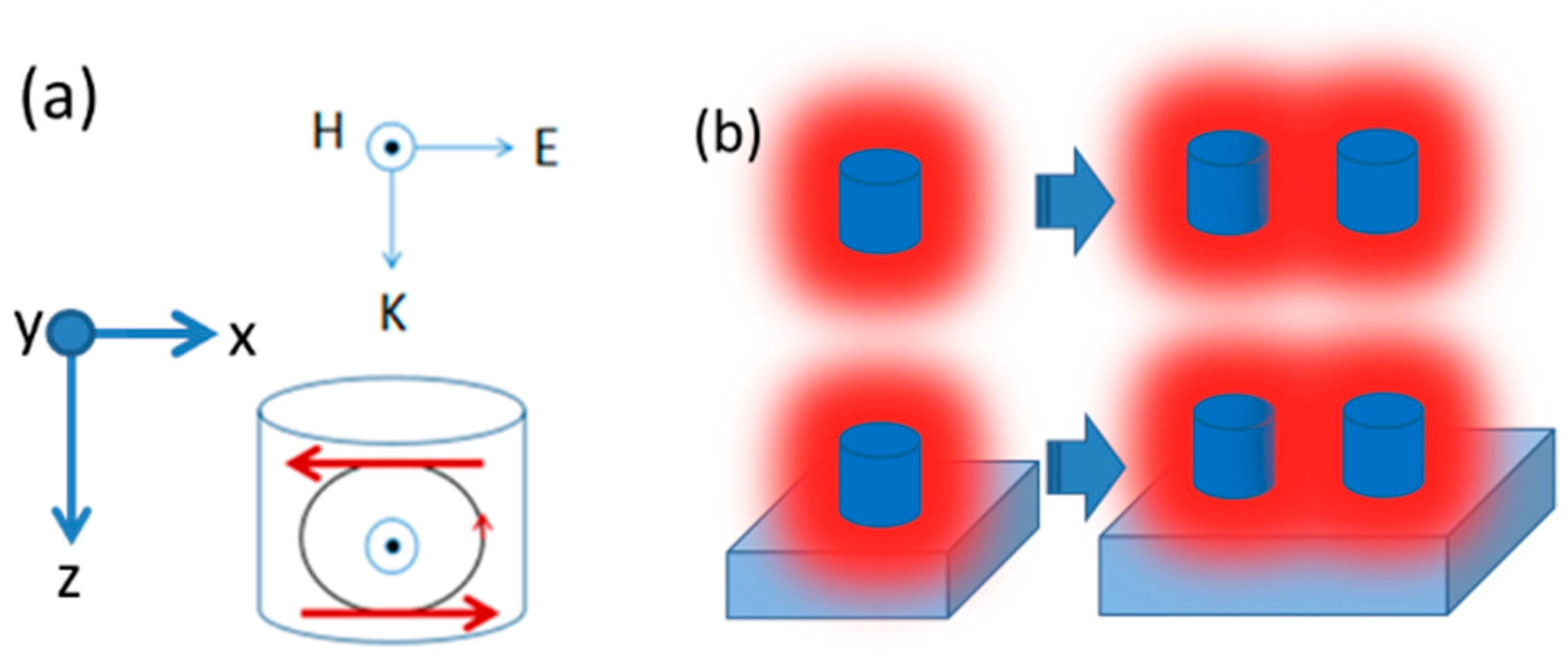
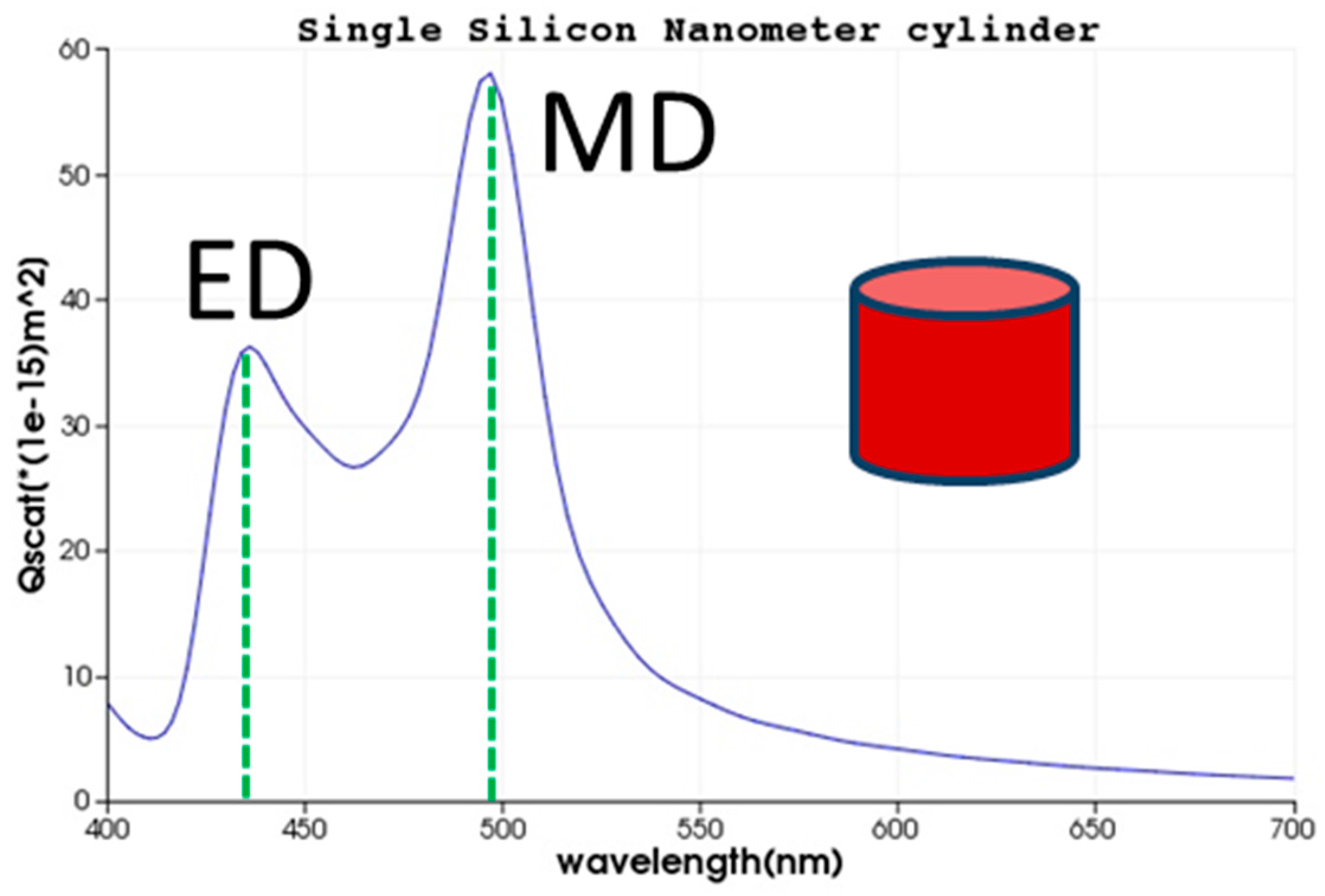


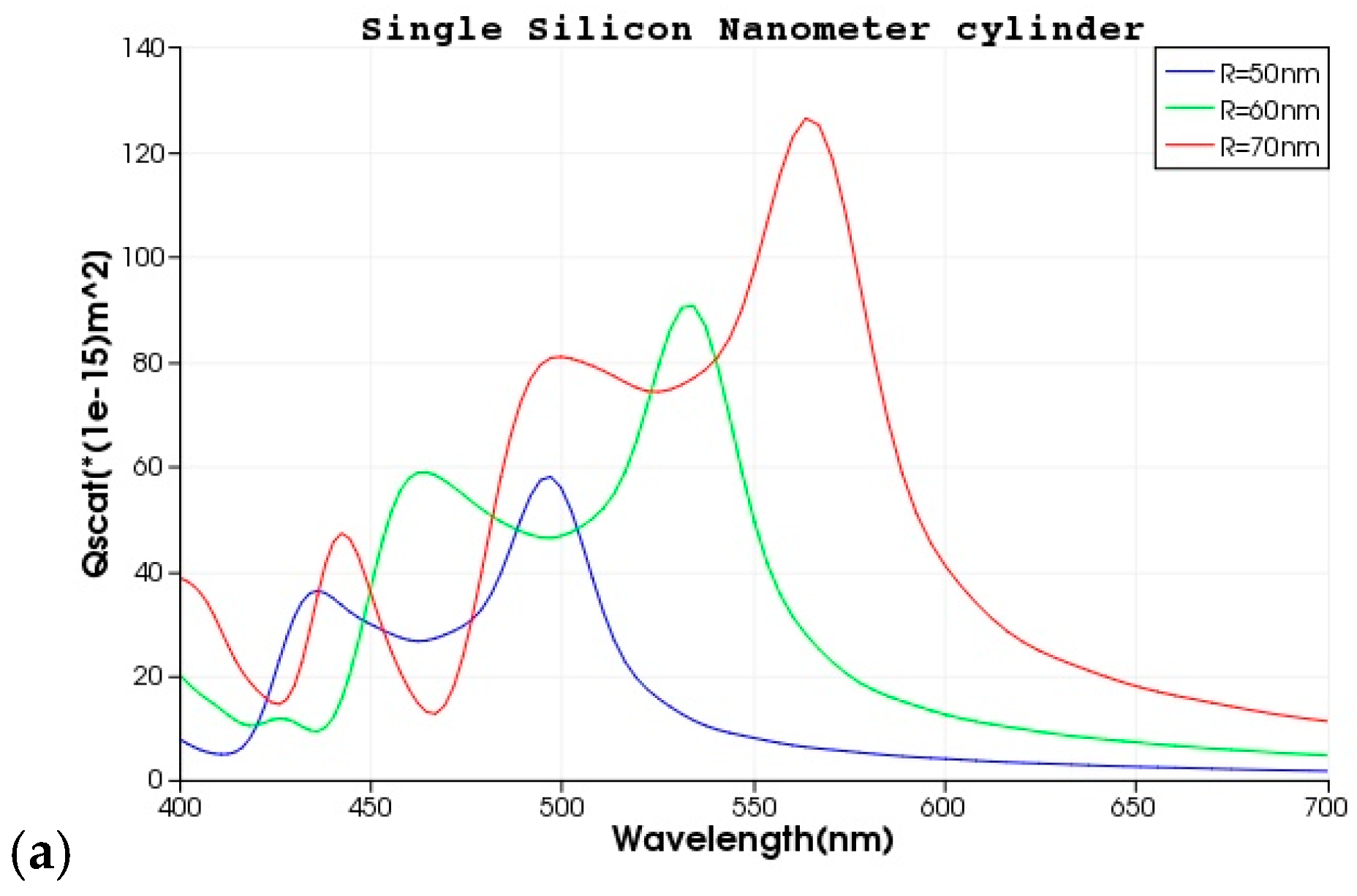
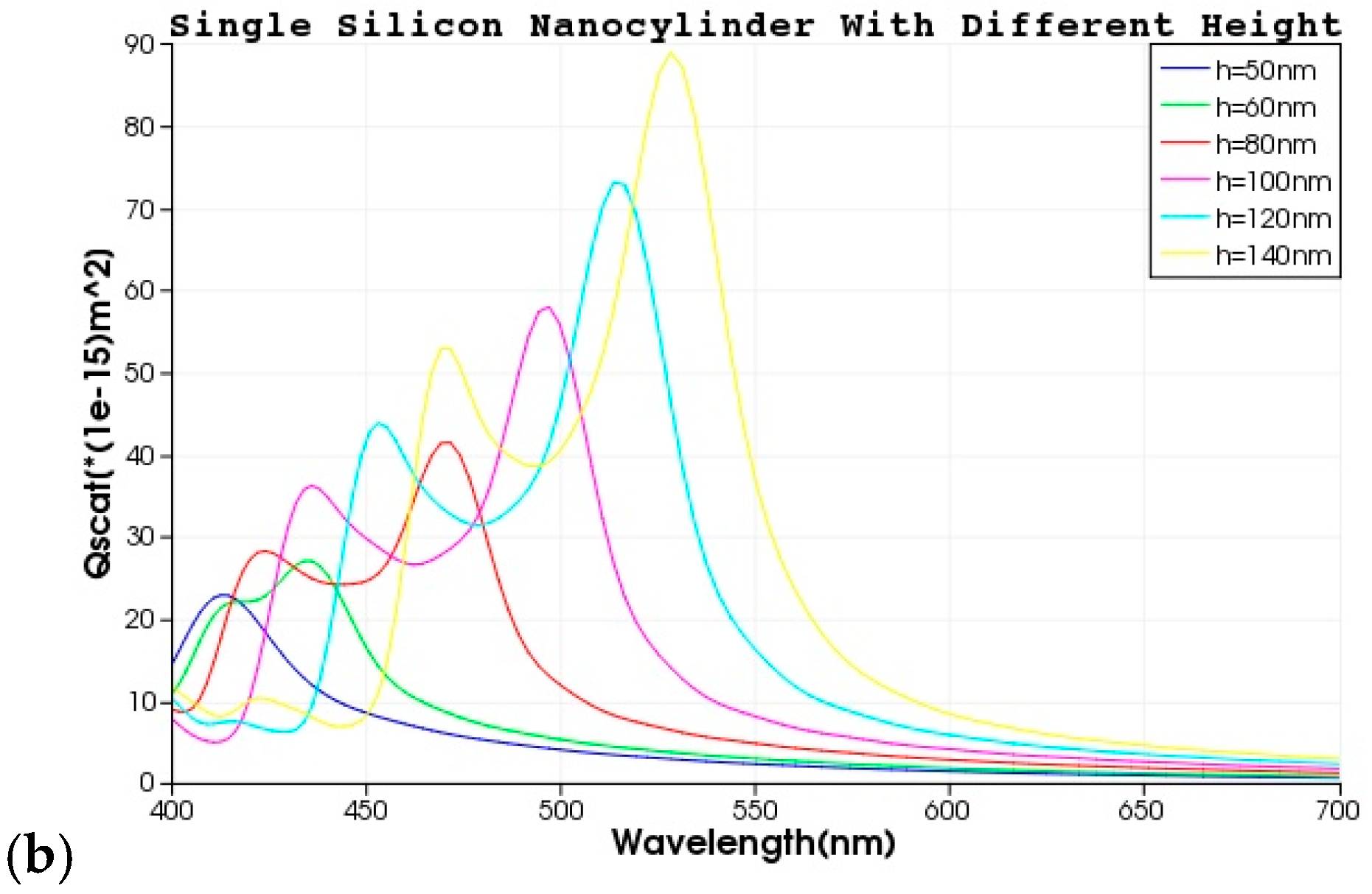
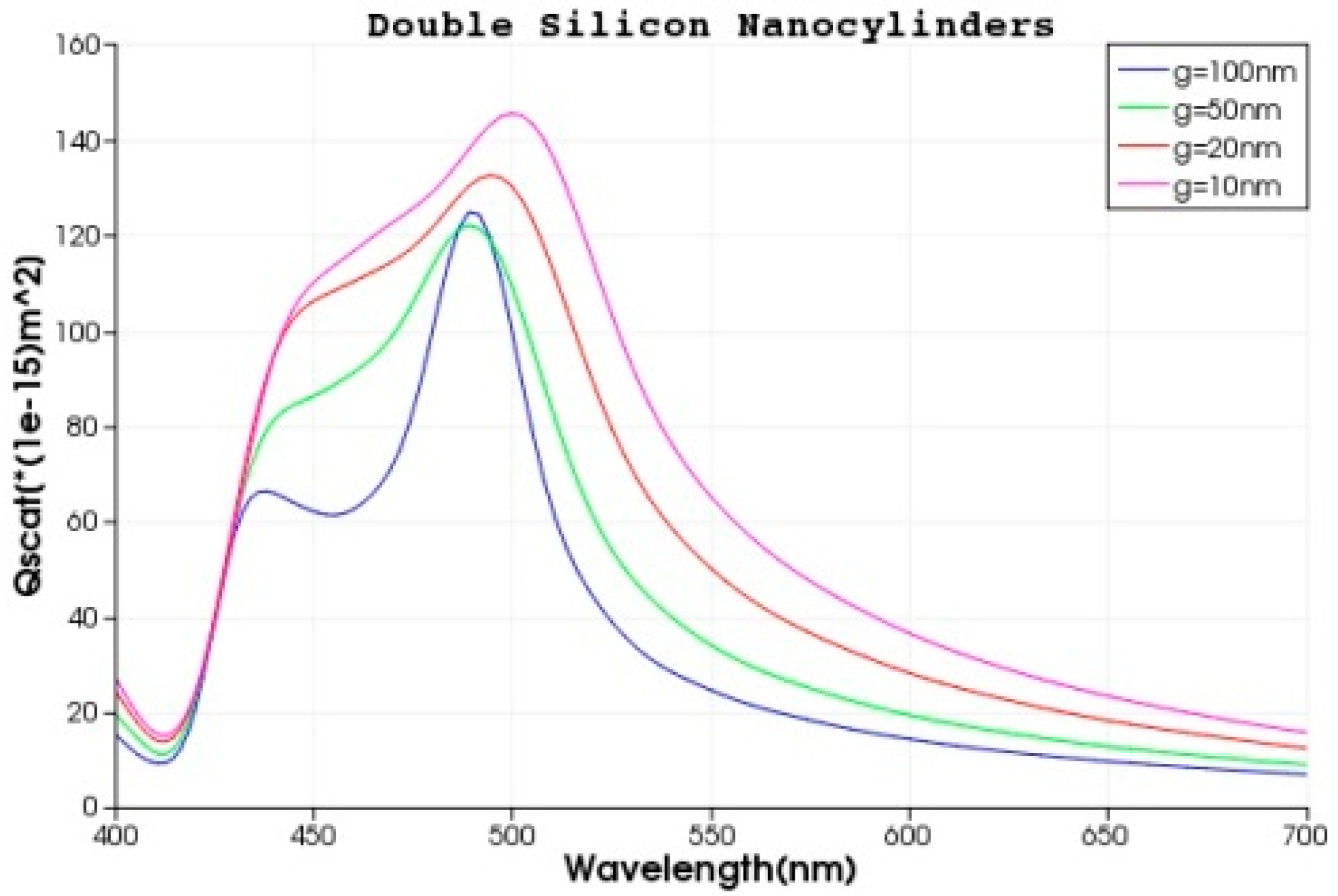
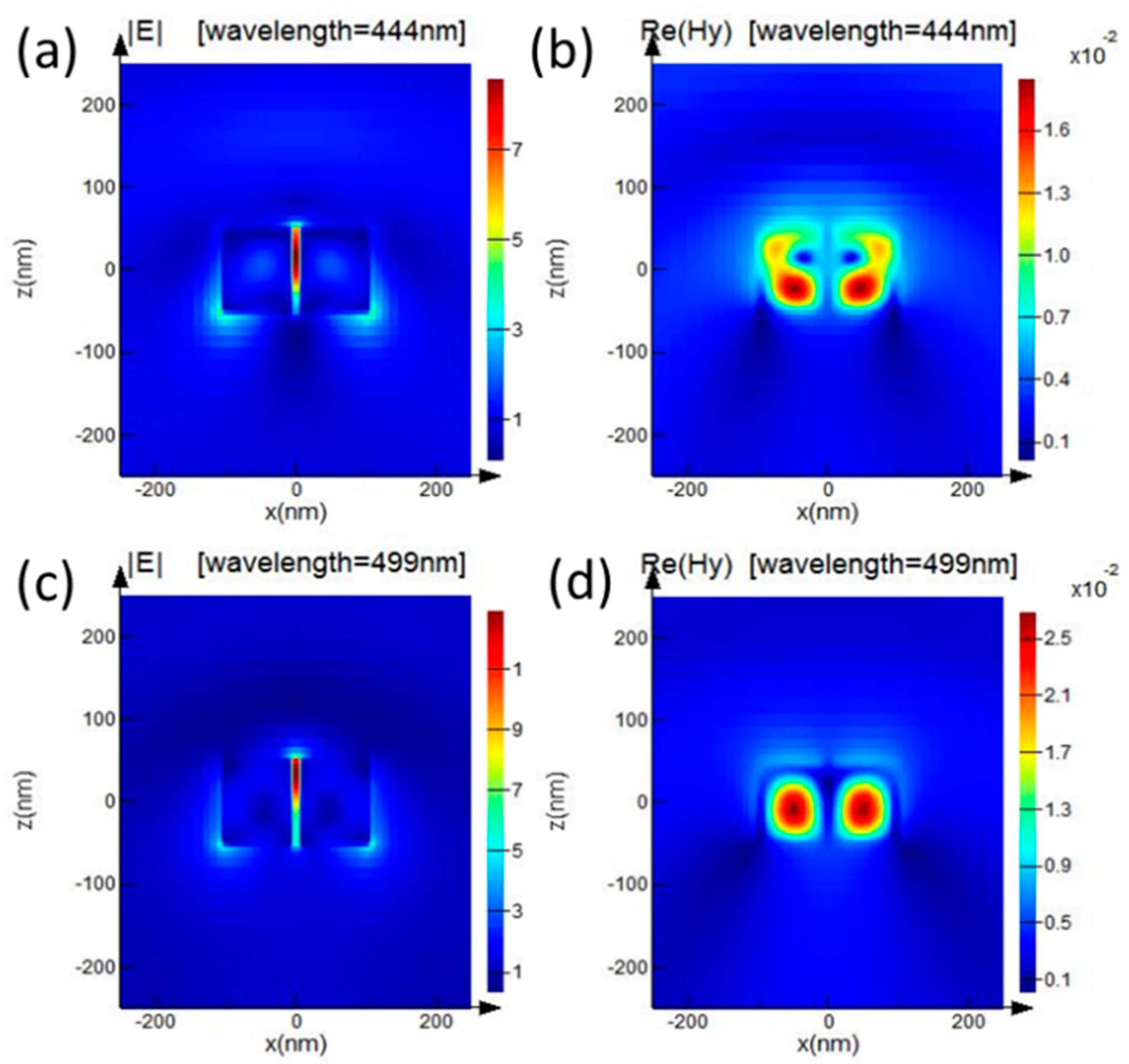

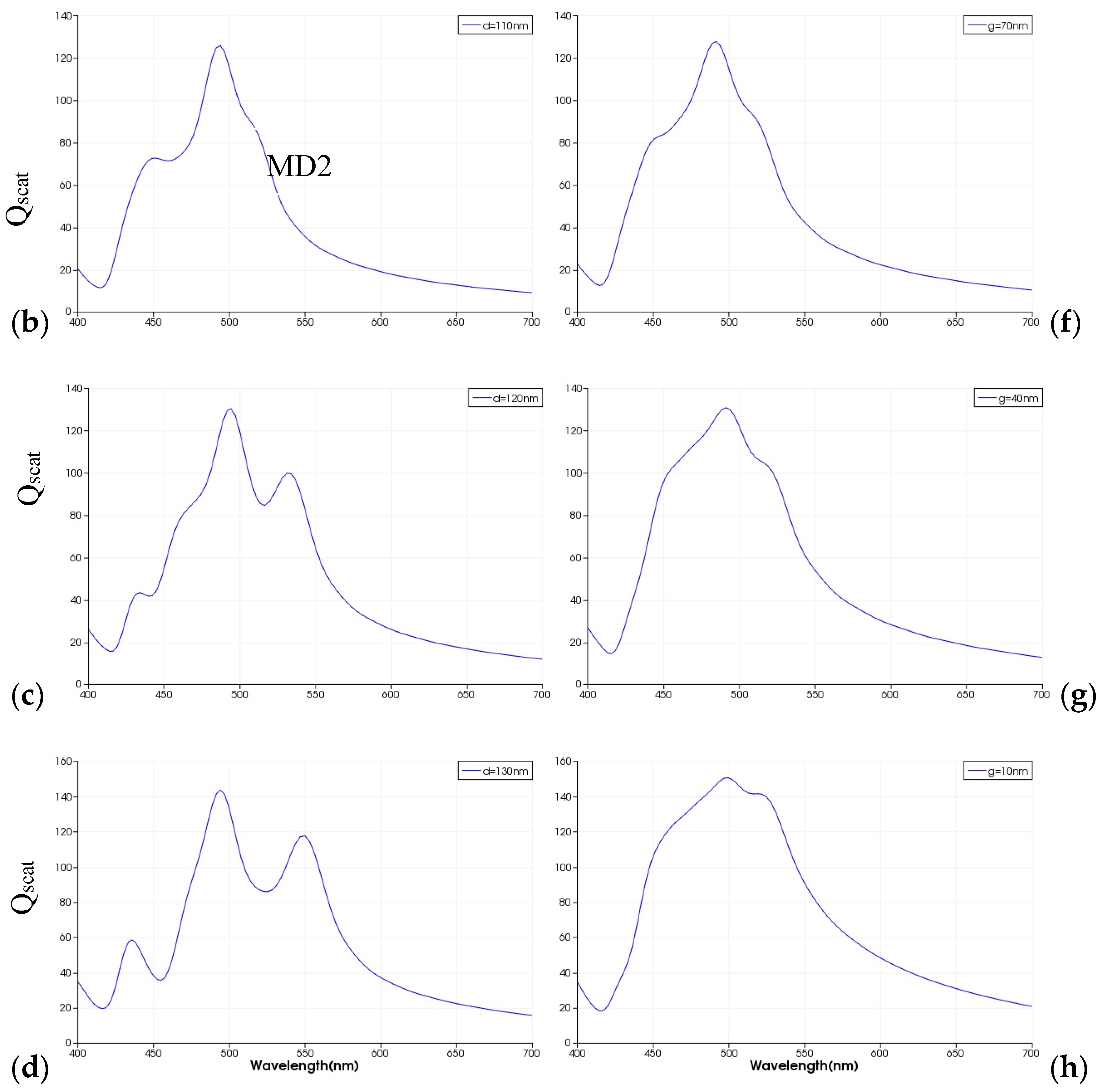


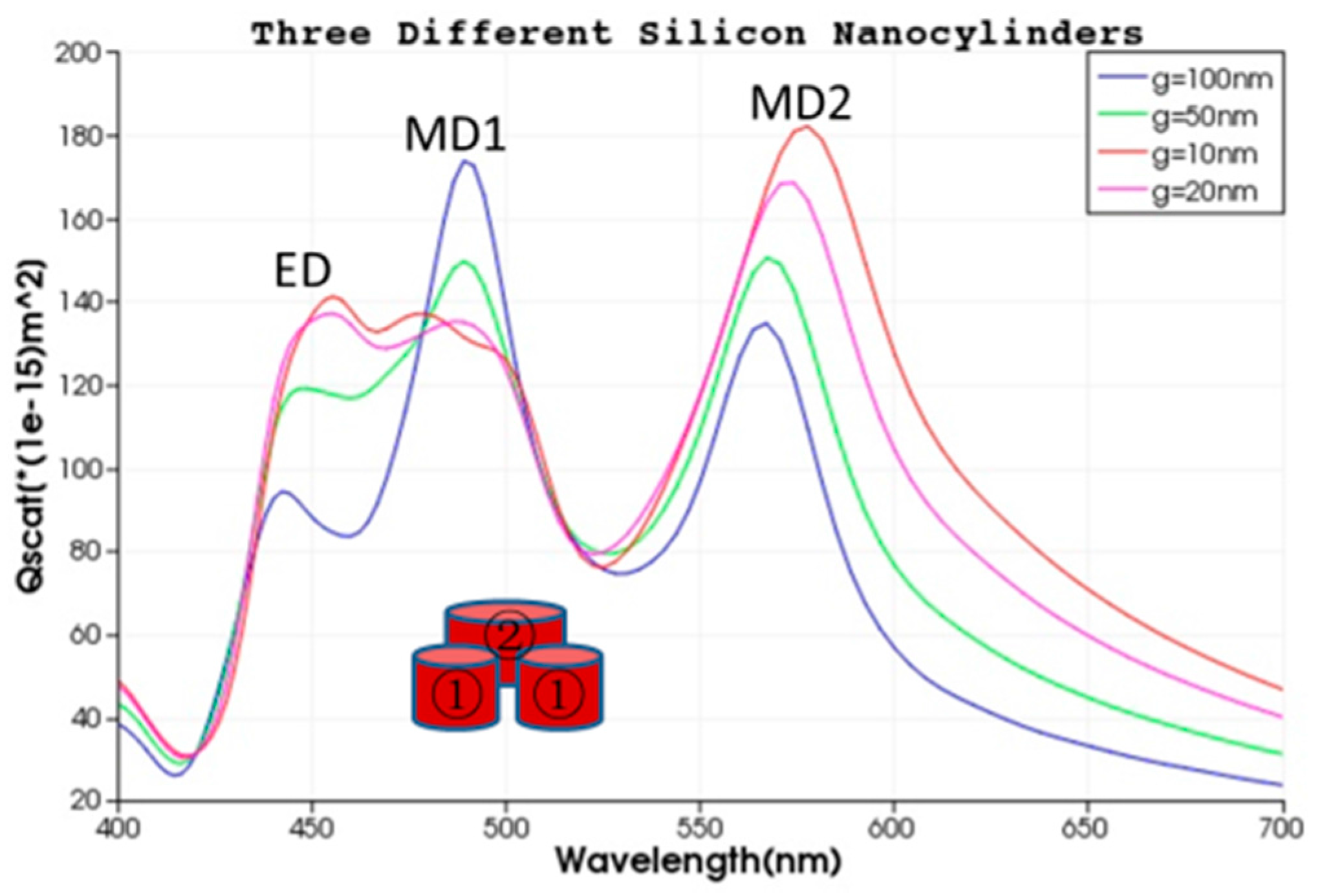
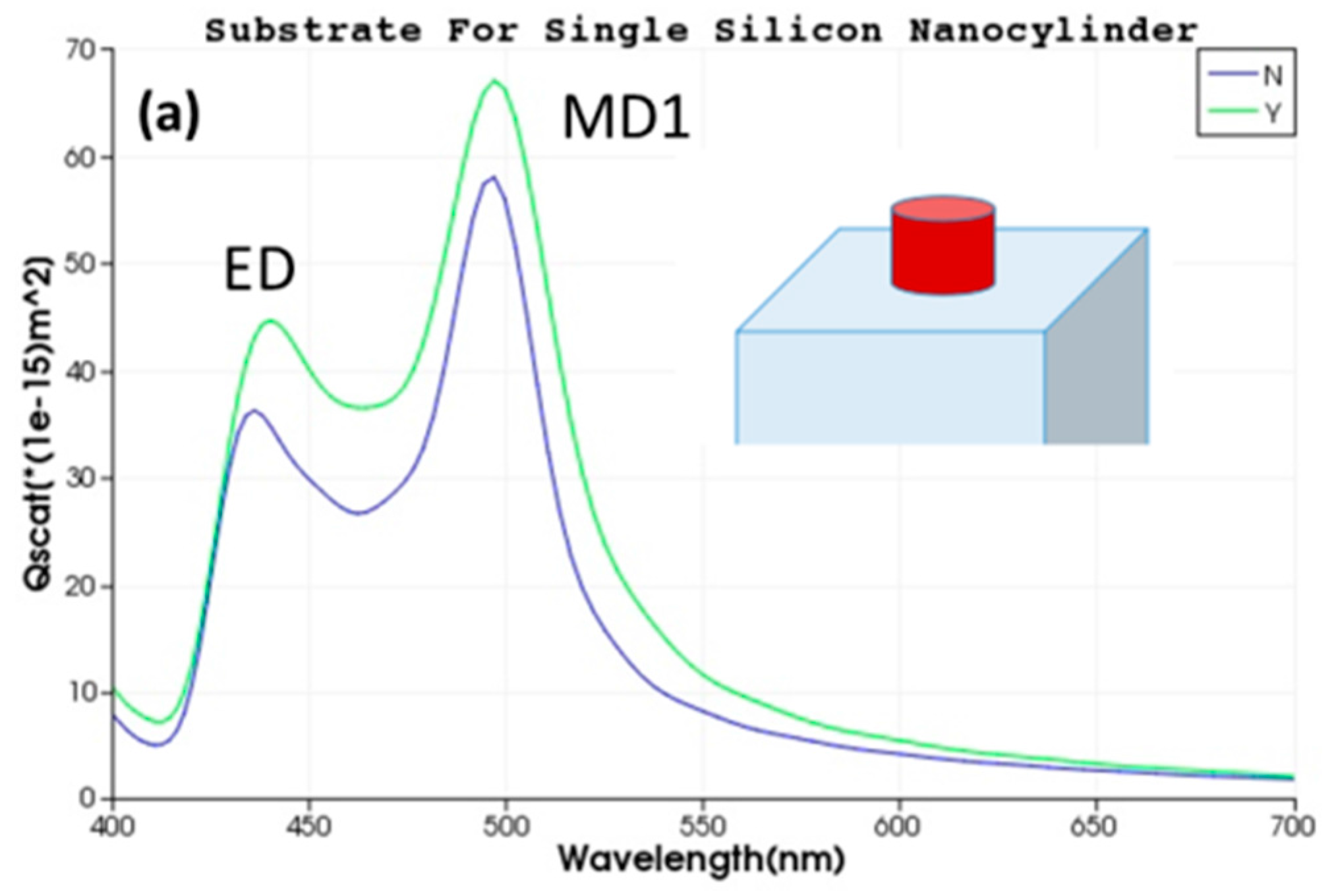
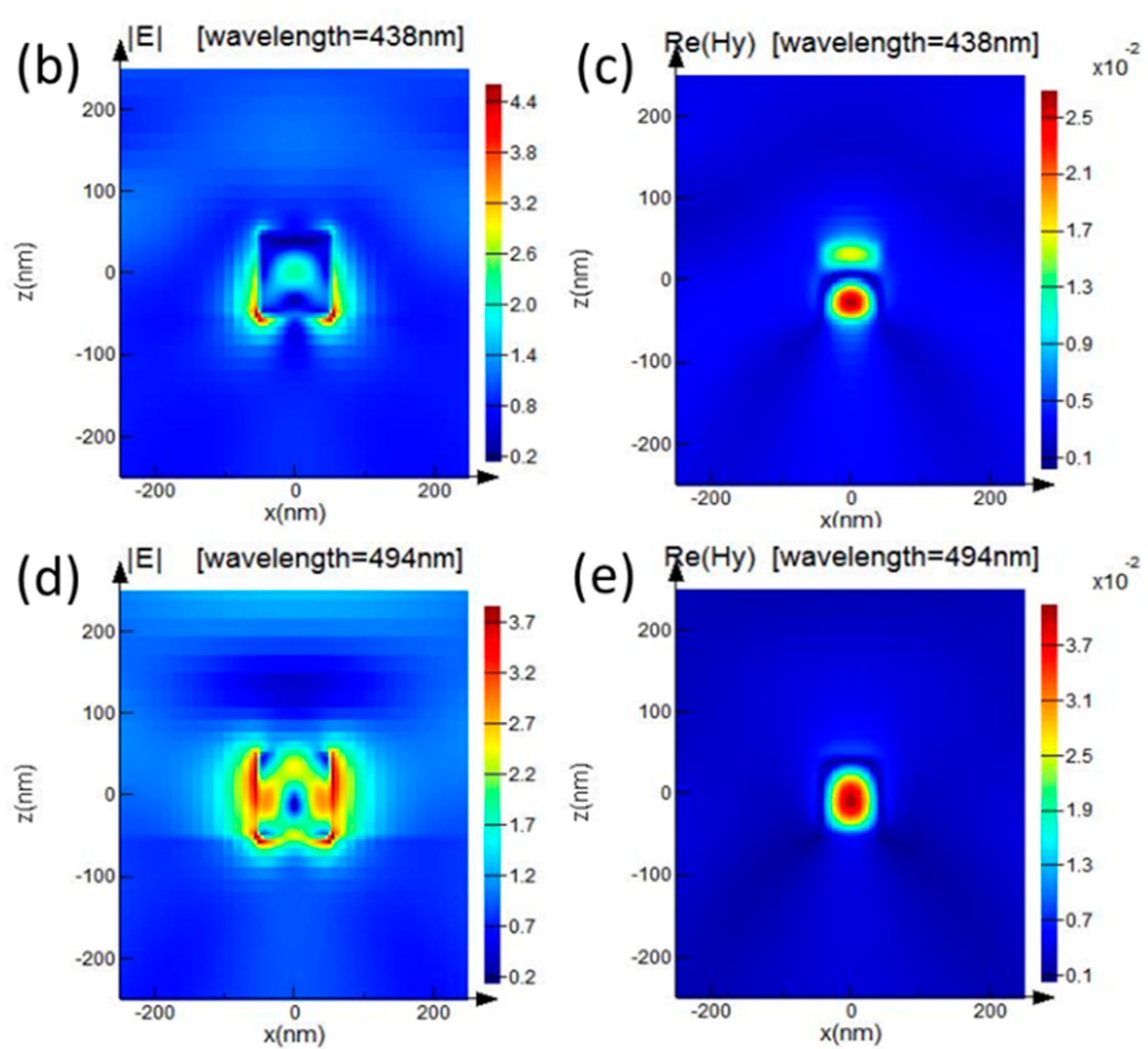
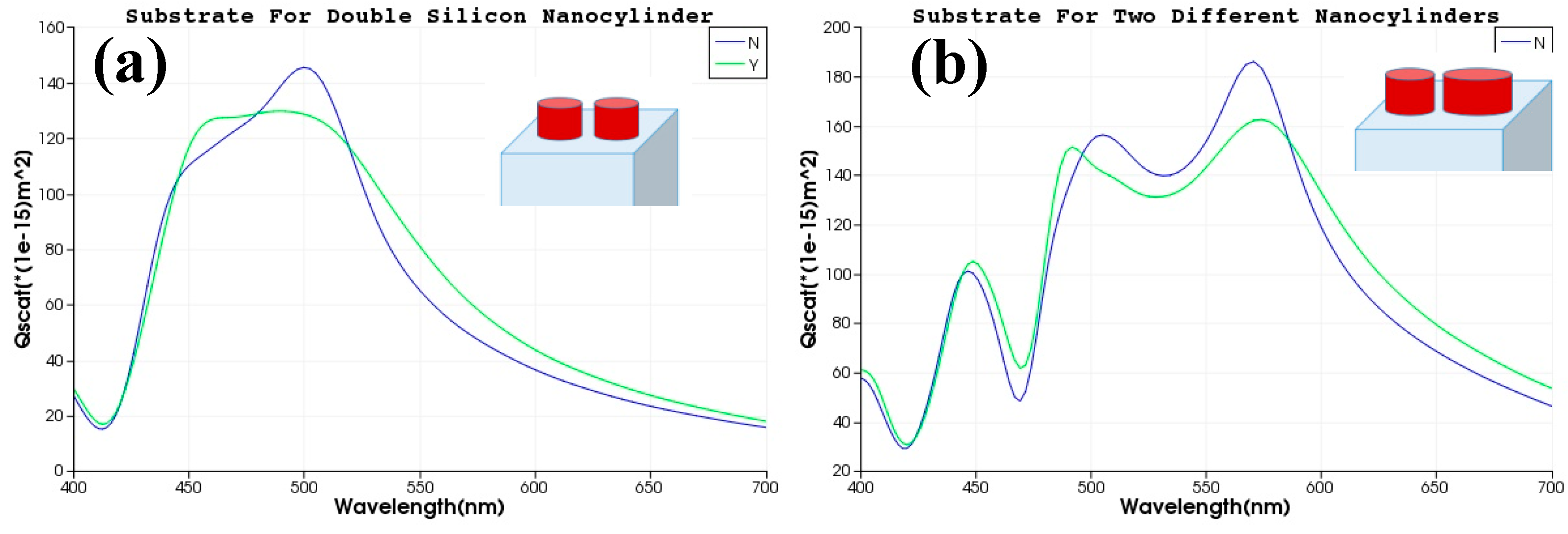
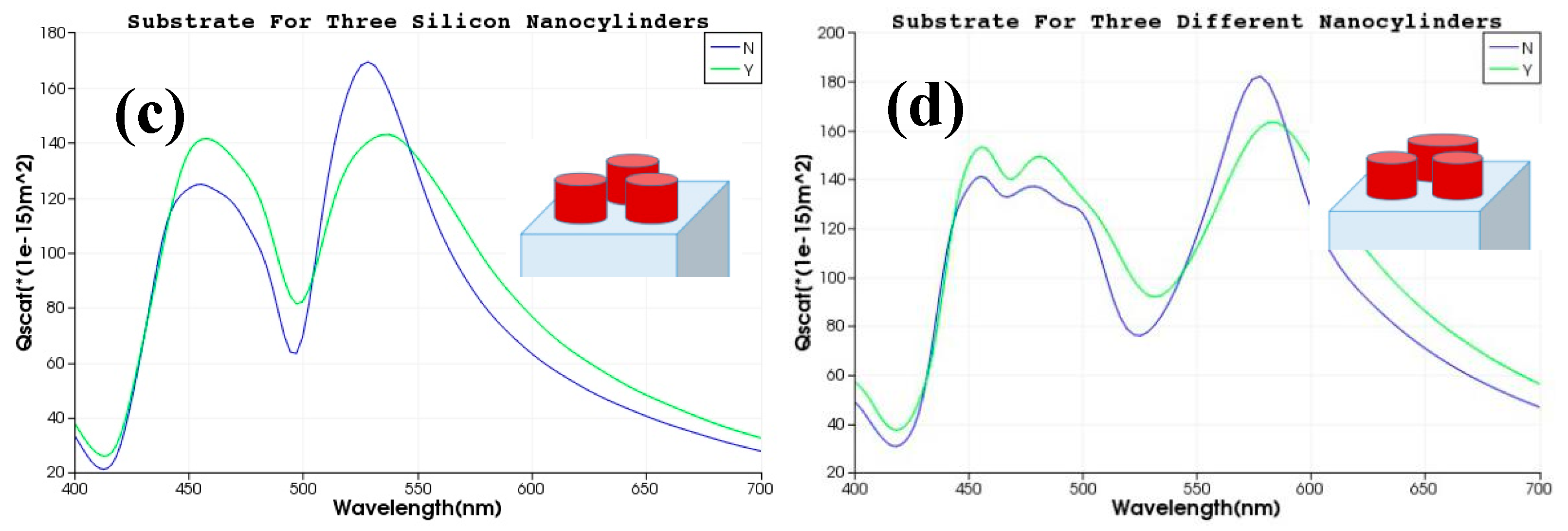
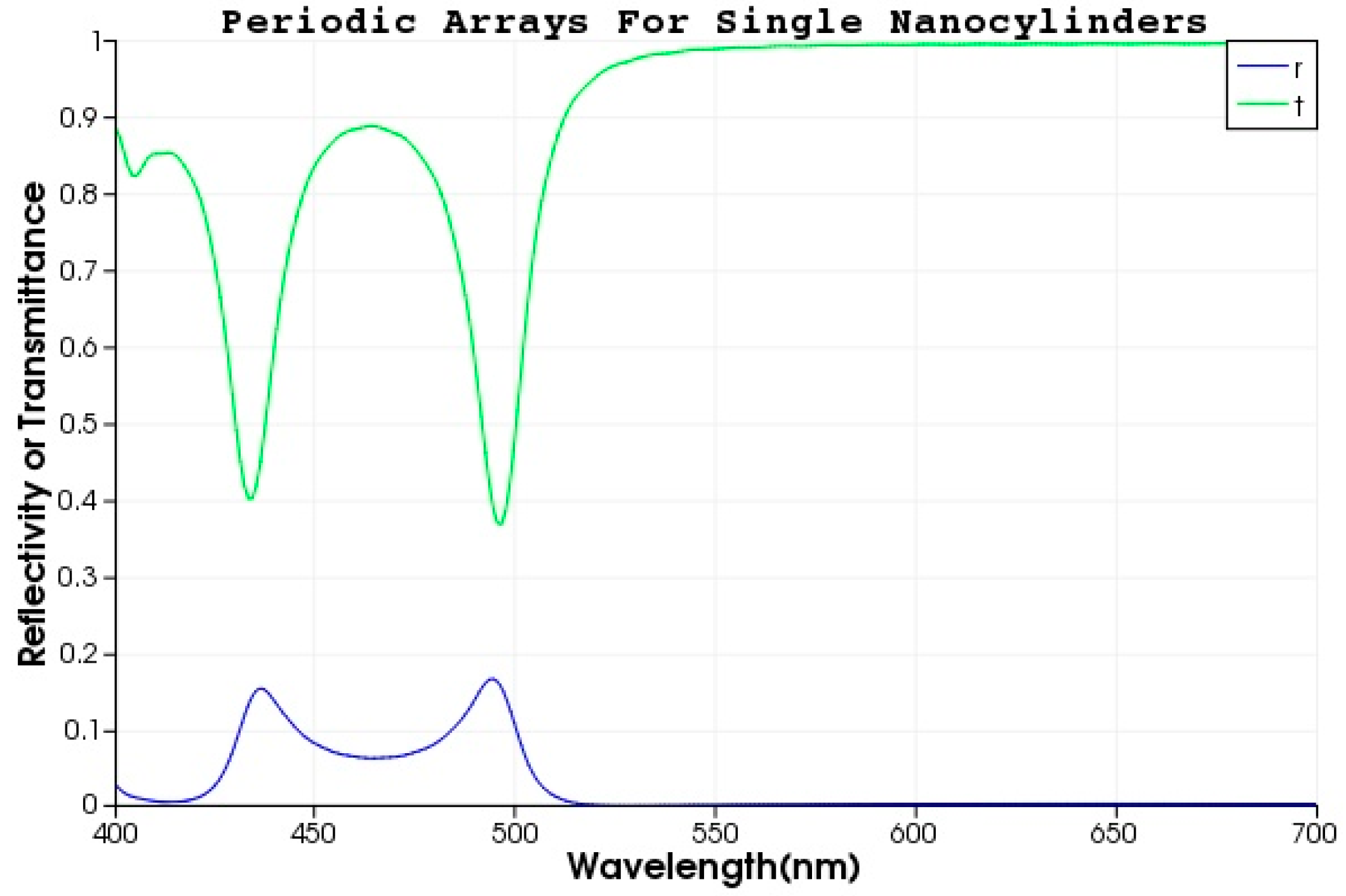
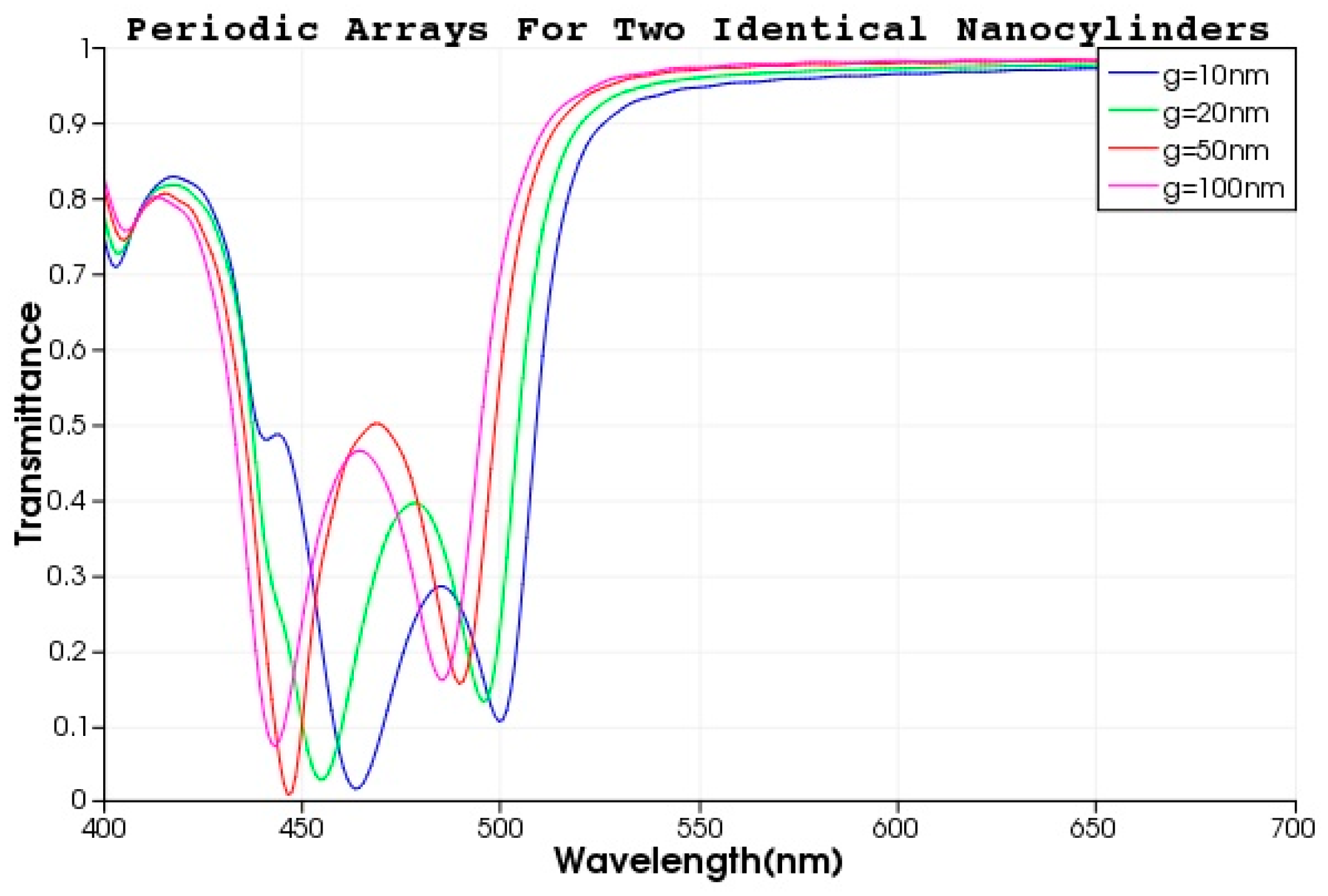
© 2018 by the authors. Licensee MDPI, Basel, Switzerland. This article is an open access article distributed under the terms and conditions of the Creative Commons Attribution (CC BY) license (http://creativecommons.org/licenses/by/4.0/).
Share and Cite
Fang, B.; Jing, X.; Ye, Q.; Cai, J.; Zhou, P. Broadband Electromagnetic Dipole Resonance by the Coupling Effect of Multiple Dielectric Nanocylinders. Appl. Sci. 2018, 8, 60. https://doi.org/10.3390/app8010060
Fang B, Jing X, Ye Q, Cai J, Zhou P. Broadband Electromagnetic Dipole Resonance by the Coupling Effect of Multiple Dielectric Nanocylinders. Applied Sciences. 2018; 8(1):60. https://doi.org/10.3390/app8010060
Chicago/Turabian StyleFang, Bo, Xufeng Jing, Qiufeng Ye, Jinhui Cai, and Pengwei Zhou. 2018. "Broadband Electromagnetic Dipole Resonance by the Coupling Effect of Multiple Dielectric Nanocylinders" Applied Sciences 8, no. 1: 60. https://doi.org/10.3390/app8010060



